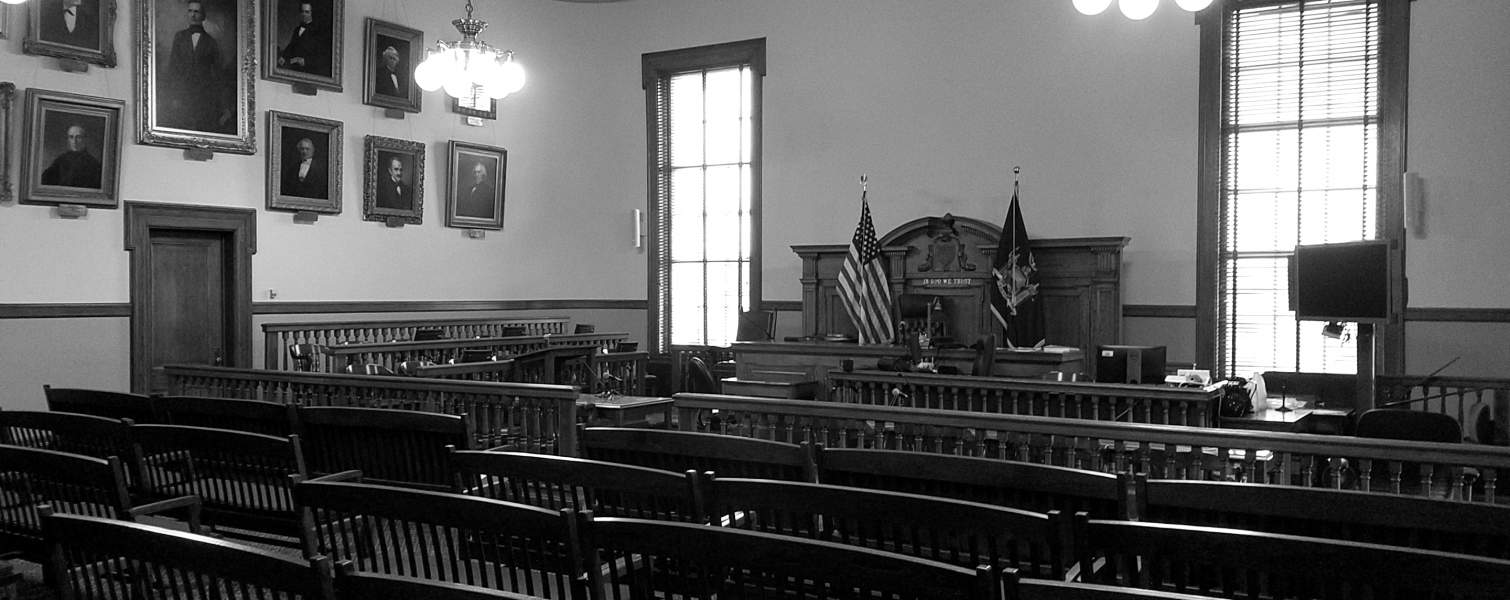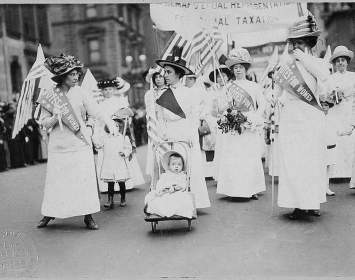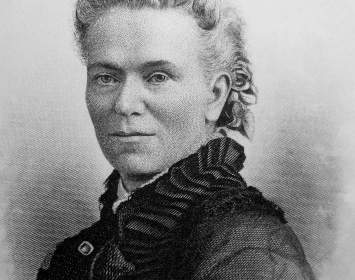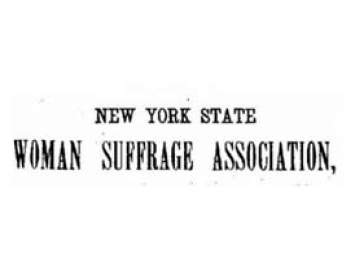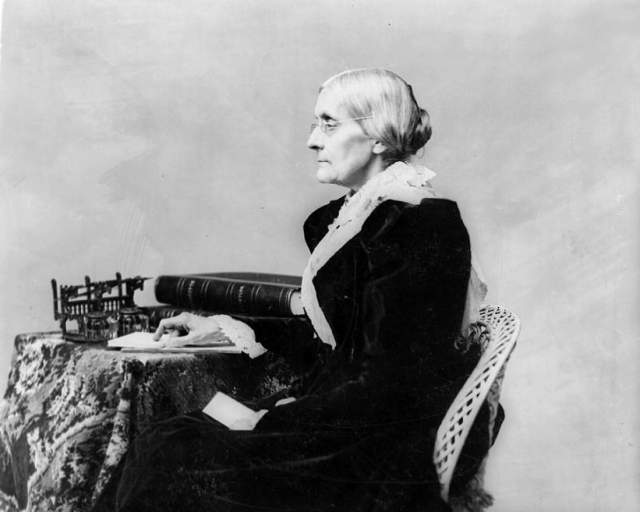On June 18, 1873, suffrage pioneer Susan B. Anthony was tried on the charge of voting illegally in the U.S. presidential election of 1872. (That Anthony had voted was never in question; she and fourteen other women had voted publicly, in Rochester, on November 1, 1872. Moreover, immediately after voting Anthony had given a newspaper interview recounting her successful effort to vote.)
Anthony was arrested on November 18, 1872, for violating the federal Enforcement Act of 1870, which provided in part that “Any person … who shall vote without having a legal right to vote … shall be deemed guilty of a crime.”
The trial began on June 18 in the Ontario County Courthouse, with Justice Ward Hunt presiding.
Though the courthouse bears no historic marker commemorating the trial, a bust of Susan B. Anthony is displayed outside the courtroom entrance and a portrait of Anthony hangs in the courtroom. On August 18, 2020, the former Court Street running behind the structure was formally renamed Susan B. Anthony Lane. For this reason the site has been reclassified as an officially marked monument.
The Building and Site. The Ontario County Courthouse was dedicated in 1858, replacing an 1824 structure sited diagonally across the street; the older structure was re-purposed as the Canandaigua City and Town Hall, which stands today. The new courthouse’s Greek-inspired design featured a large golden dome. The structure was built at a cost of about $57,000. It was significantly enlarged in 1908 with the addition of a third story and footprint extensions on the north and south sides. A 1987–1988 renovation, the most ambitious historic preservation project in Ontario County's history, preserved the building’s historic appearance while converting interior areas in the basement and attic, long used for storage, back into working offices. After a further renovation in 2016, the structure included courtrooms on the first, second, and third floors.
The statue of “Lady Justice” atop the dome is the fourth such statue to grace the building. Placed in 2012, it holds the original scales of justice from the first such statue placed in 1858.
The Ontario County Courthouse and the Canandaigua City and Town Hall form part of the Canandaigua Historic District, listed on the National Register of Historic Places in 1984. They are two of some 338 contributing structures within this District, which encompasses the village’s historic core.
Thanks to Edward Varno for research assistance. Special thanks to Deputy County Administrator Brian Young for site access for photography.

Susan B. Anthony
Susan B. Anthony, 1820 - 1906

Ontario County Courthouse
Ontario County Courthouse stands on high ground overlooking a principal highway in Canandaigua, New York. The upper floor with its taller windows contains the courtroom where Susan B. Anthony was tried. Municipal offices coveted for their views occupy the base of the cupola (windows above front pediment).

Courtroom in which Susan B. Anthony was tried
An ambitious 1987 - 88 renovation restored this grand courtroom to its late-eighteenth-century appearance. Its walls bear numerous portraits of influential judges and community leaders -- and a portrait of Susan B. Anthony.
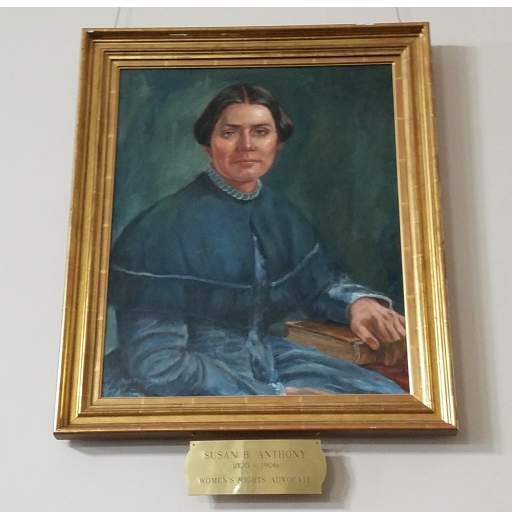
Susan B. Anthony Portrait
This portrait painting hangs in the Ontario County Courthouse courtroom in which she was tried. The portrait apparently shows Anthony at a slightly younger age than at her trial; when tried, she was fifty-three years old.
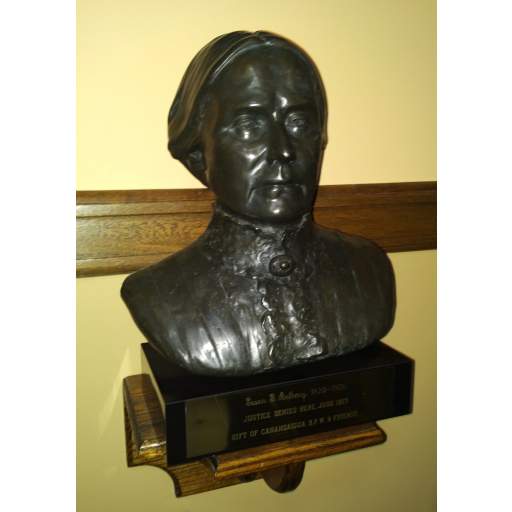
Bust of Susan B. Anthony
This bust of Susan B. Anthony is displayed just outside the entrance to the courtroom where she was tried.

Anthony Bust Inscription
Detail view of the inscription on the base of the Anthony bust. It reads: "Susan B. Anthony, 1820 - 1906 / JUSTICE DENIED HERE, JUNE 1873 / GIFT OF CANANDAIGUA B. P. W. & FRIENDS"
Associated Causes
Associated Historical Events
The Arrest of Susan B. Anthony
November 18, 1872
The Trial of Susan B. Anthony
June 18–20, 1873

